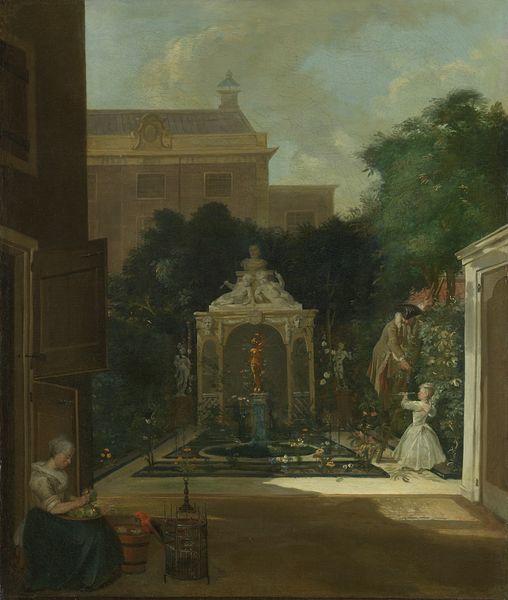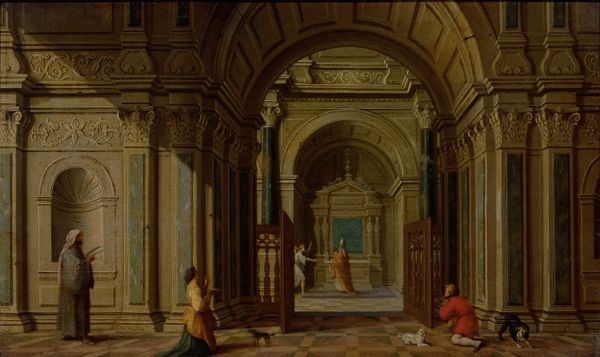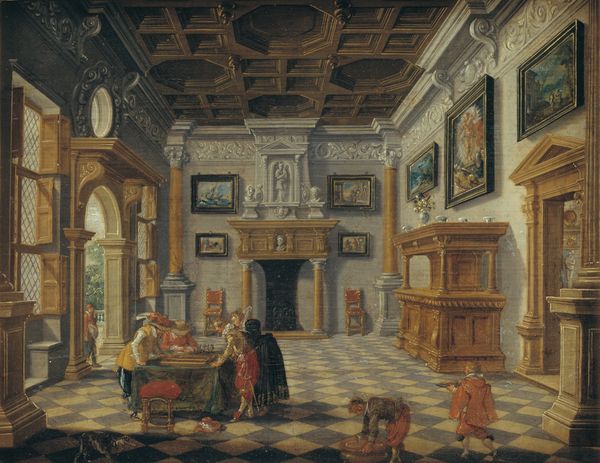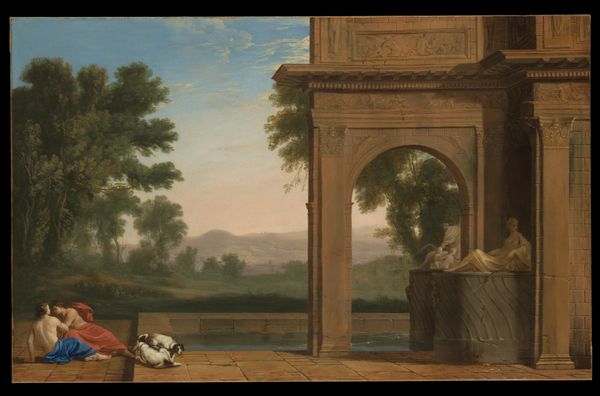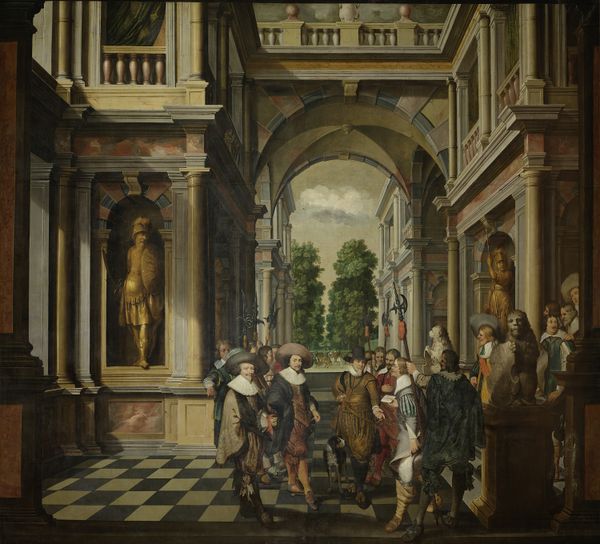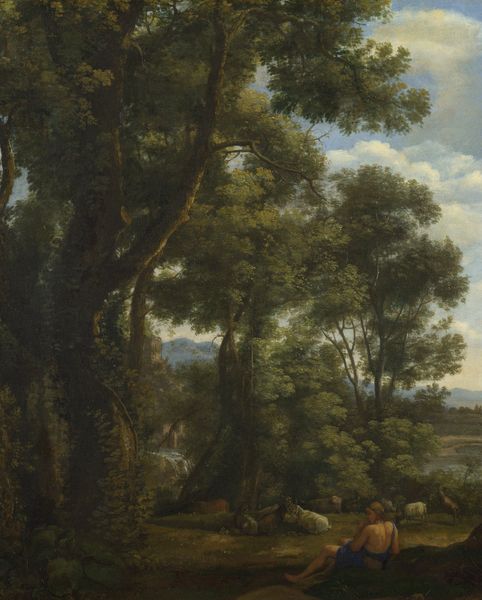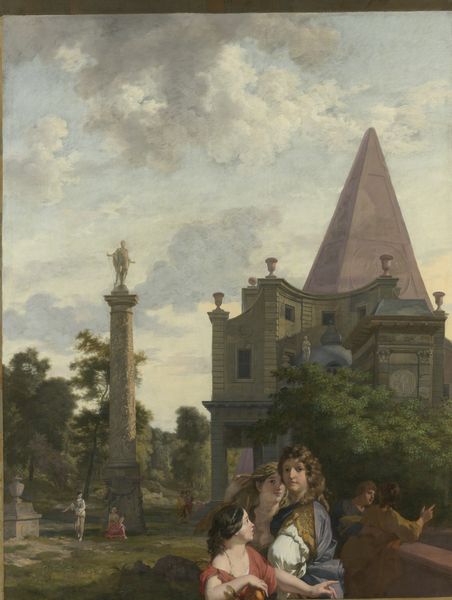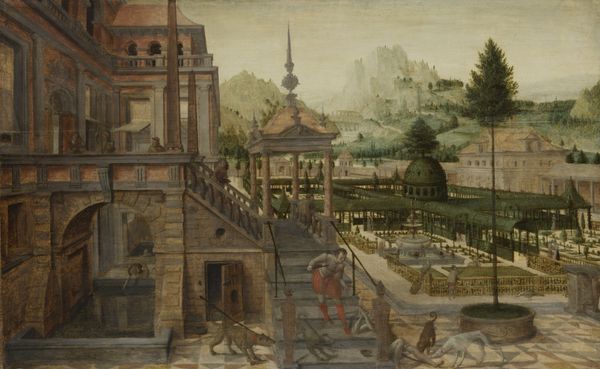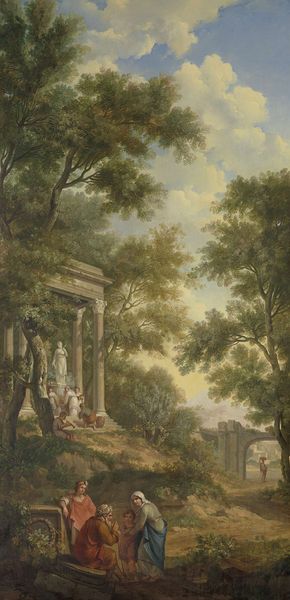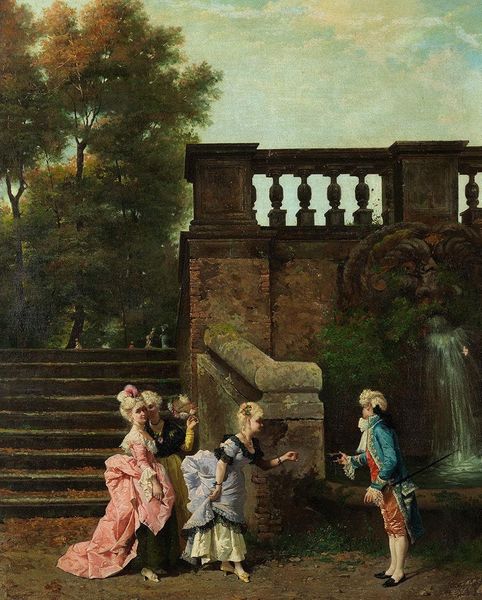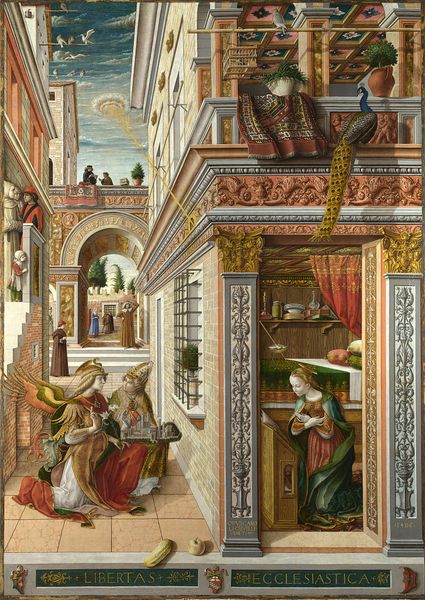
panel, painting, oil-paint
#
panel
#
baroque
#
dutch-golden-age
#
painting
#
oil-paint
#
landscape
#
perspective
#
oil painting
#
cityscape
#
genre-painting
Dimensions: height 309 cm, width 122 cm, depth 3 cm, height 319 cm, width 132 cm, depth 13.7 cm
Copyright: Rijks Museum: Open Domain
Editor: So, this is “A Seven-Part Decorative Sequence: An Outdoor Stairway” painted by Dirck van Delen around 1630. It’s oil on panel, and the perspective is quite striking. I get this sense of formality, but almost to an exaggerated degree. How do you interpret this work? Curator: I see it as a commentary on the rising merchant class in the Dutch Golden Age. Van Delen’s precise rendering of architectural space, the grandeur of the outdoor stairway, serves not only as an aesthetic showcase but also signifies a shifting social landscape. The attention to perspective becomes a visual metaphor for aspirations toward upward mobility. Editor: That’s fascinating. So, you see the architecture itself as symbolic? Curator: Precisely. Think about it: who has access to these grand spaces? The painting’s genre elements, figures populating the scene, act as a form of social theater. What statement does the crisp detail make about power, privilege, and access in this era? How might someone outside of this upper class view the figures within? Editor: I see what you mean. The focus on precise architectural detail could be showcasing a new kind of power. But isn't the very act of painting this subject… sort of glorifying it, too? Curator: It's a fair point. The painting both depicts and participates in this emerging culture. Glorification exists alongside subtle critique. We are dealing with an artist deeply embedded in a society undergoing rapid transformation. Can art simultaneously observe and perpetuate the dynamics it portrays? Editor: It’s definitely more complex than I initially thought. Thanks for showing me the layers beyond just the aesthetic! Curator: Of course. Remember to always interrogate the role of art in shaping – and reflecting – social narratives. That critical lens is key.
Comments
No comments
Be the first to comment and join the conversation on the ultimate creative platform.
